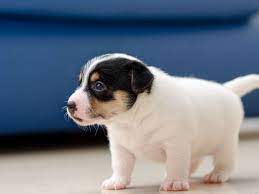Introduction:
Bringing a new puppy into your life is a delightful experience filled with love, joy, and endless opportunities for growth and bonding. Among the many essential aspects of raising a happy and healthy pup, playtime stands out as a crucial element. Puppy playtime not only provides your furry companion with much-needed physical exercise but also stimulates their mental faculties, aids in socialization, and fosters the development of a strong human-canine bond. In this article, we will explore the significance of puppy playtime and present an array of fun games and activities that will ensure both you and your adorable pup have an enjoyable and rewarding playtime experience. Watch funny puppy on YouTube channel @animalhub2023.
The Importance of Puppy Playtime:
Before diving into the exciting games and activities, it is crucial to understand why playtime is so essential for puppies:
- Physical Exercise:
Puppies are bundles of energy, and regular playtime provides an outlet for all that youthful vigor. Engaging in physical activities helps maintain a healthy weight, promotes muscle development, and keeps their bones strong.
- Mental Stimulation:
Playtime serves as a valuable opportunity to challenge your puppy’s mind. Puzzle games and interactive toys can help develop cognitive abilities, problem-solving skills, and prevent boredom. funny puppy
- Socialization:
Introducing your pup to different people, animals, and environments during playtime encourages proper socialization. This sets the foundation for a well-adjusted, confident, and friendly adult dog.
- Bond Building:
Playing with your puppy strengthens the emotional bond between you and your pet. The time spent engaging in fun activities creates positive associations, leading to a more trusting and loving relationship.
Creating a Safe Play Environment:
Before initiating playtime, it’s essential to create a safe and suitable play environment for your puppy:
2.1 Puppy-Proofing:
Ensure the play area is free from potential hazards like electrical cords, sharp objects, toxic plants, and small items that your pup could swallow. funny puppy
2.2 Size and Space:
Consider the size of your puppy and the space available. Indoor play can involve designated rooms, while outdoor play requires a secure, fenced area.
2.3 Age-Appropriate Toys:
Choose toys that are specifically designed for puppies, as they are durable, safe, and suited to their developmental stage.
Fun Games and Activities:
3.1 Fetch:
A classic game that most dogs love, fetch engages your puppy’s natural instinct to chase and retrieve objects. Use a soft ball or a plush toy to minimize the risk of injury.
3.2 Tug of War:
Tug of war can be an excellent bonding activity, but it’s essential to establish boundaries. Use a designated tug toy and teach your puppy to “drop it” when requested. funny puppy
3.3 Hide and Seek:
Hide and seek is an enjoyable game that encourages mental stimulation. Hide behind furniture or in another room and call your pup’s name, rewarding them with praise and treats when they find you.
3.4 Puzzle Toys:
Puzzle toys challenge your puppy’s problem-solving skills. Stuff interactive toys with treats or kibble, encouraging them to work out how to access the rewards.
3.5 Agility Course:
Create a simple indoor or outdoor agility course using everyday items like cones, boxes, and tunnels. This activity enhances your puppy’s coordination, confidence, and physical abilities.
3.6 Bubble Chasing:
Blowing pet-safe bubbles can be fascinating for your pup. Watch them delight in chasing and popping the bubbles around the yard. funny puppy
3.7 Playdates:
Arrange playdates with other friendly and vaccinated puppies or well-behaved adult dogs. Socializing with other canines promotes healthy social behavior and play skills.
3.8 Obedience Training Games:
Incorporate obedience training into playtime by teaching commands like “sit,” “stay,” or “come.” Use treats and positive reinforcement to make it an enjoyable learning experience. funny puppy
3.9 Water Play:
On a hot day, introduce your pup to shallow water play in a kiddie pool or sprinkler. Many dogs enjoy splashing around and cooling off in the water.
Tips for Successful Puppy Playtime:
4.1 Regularity:
Consistency is key for successful puppy playtime. Establish a routine to ensure your pup gets daily play sessions.
4.2 Duration:
Keep play sessions age-appropriate. Younger puppies may have shorter bursts of energy, while older ones can play for more extended periods. funny puppy
4.3 Observe Limits:
Pay attention to your puppy’s energy levels and avoid overexertion. Provide breaks and rest when needed.
4.4 Positive Reinforcement:
Always use positive reinforcement during playtime. Praise, treats, and affection reinforce good behavior and strengthen the bond.
Conclusion:
Puppy playtime is an incredibly rewarding experience for both you and your furry friend. It not only promotes physical health but also nurtures mental well-being and emotional bonding. Engaging in a variety of fun games and activities not only makes playtime exciting but also stimulates your puppy’s growth and development. funny puppy. With the right environment, toys, and positive reinforcement, you can create an enriching playtime routine that will contribute to a happy, well-adjusted, and socially adept adult dog. So, let the fun begin, and enjoy the endless joy of puppy playtime!
Read more on Puppies: Puppies training tips

